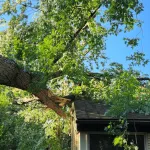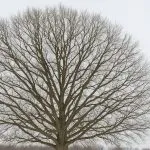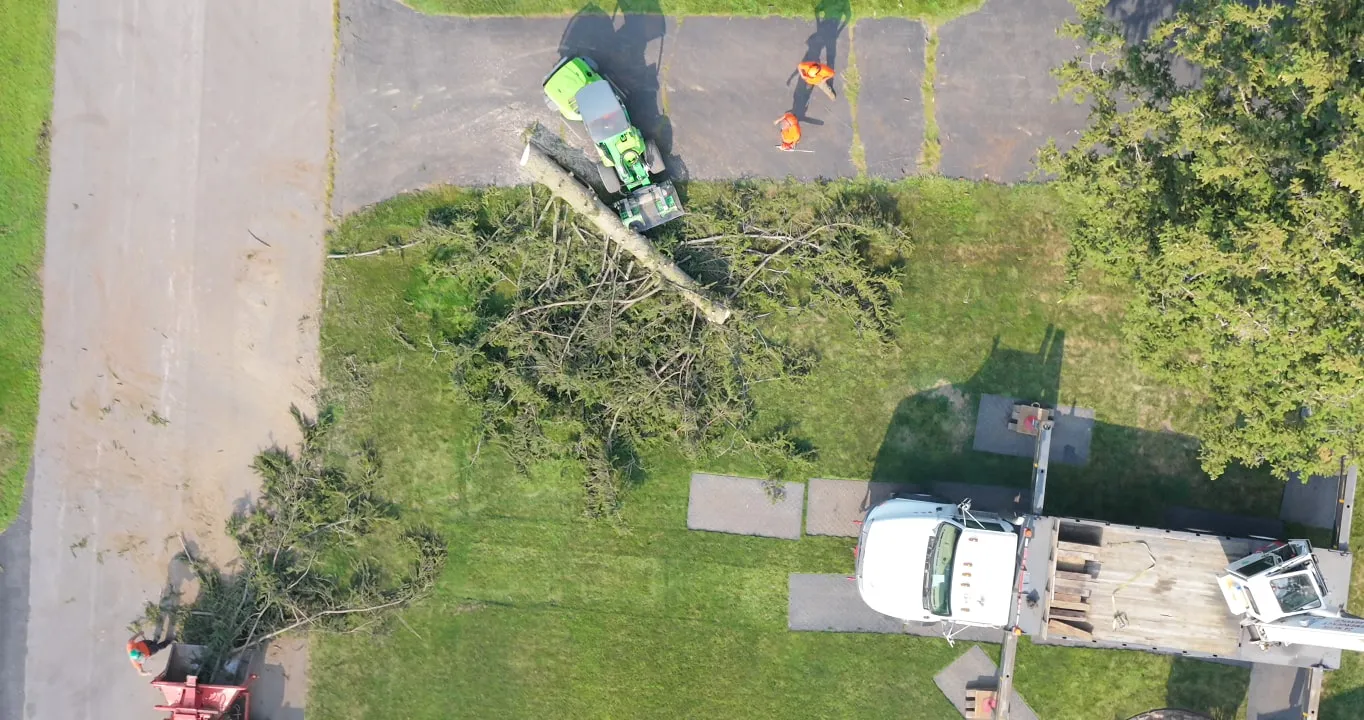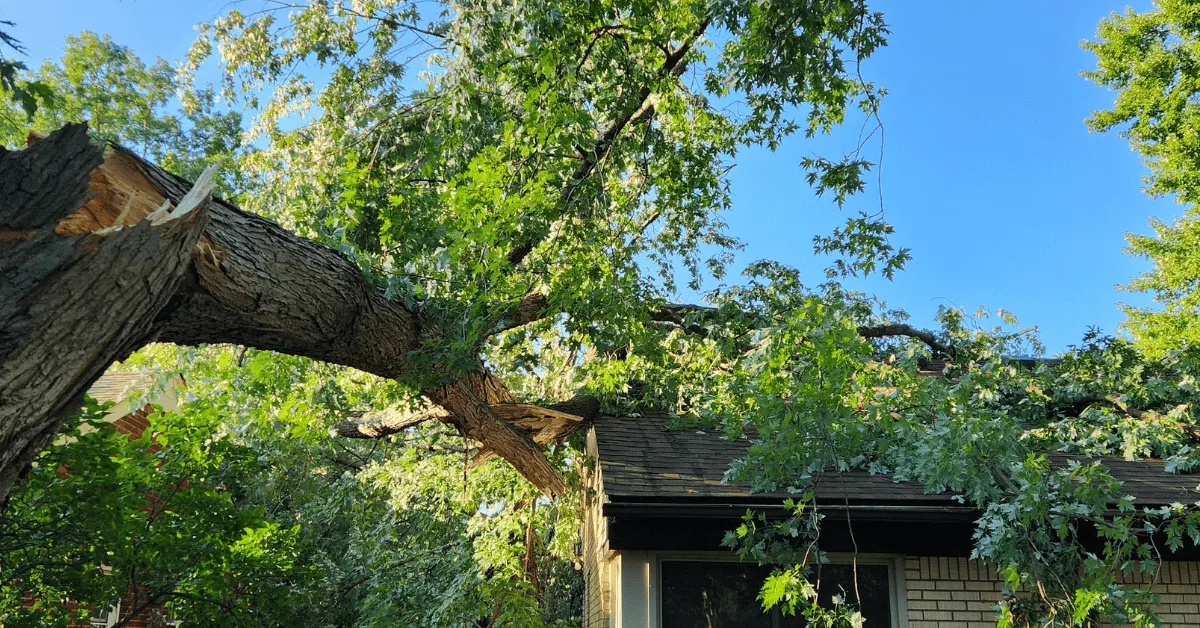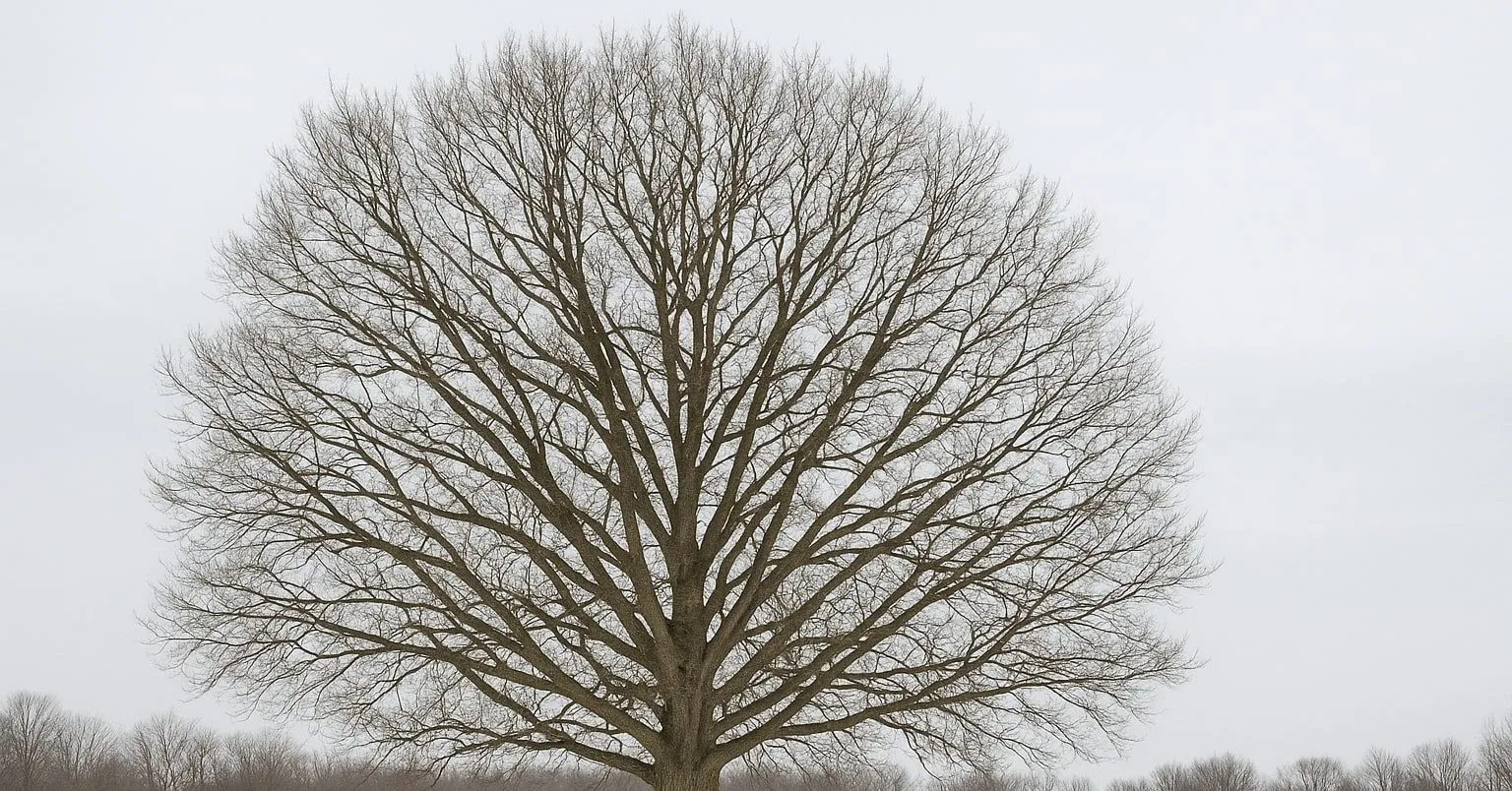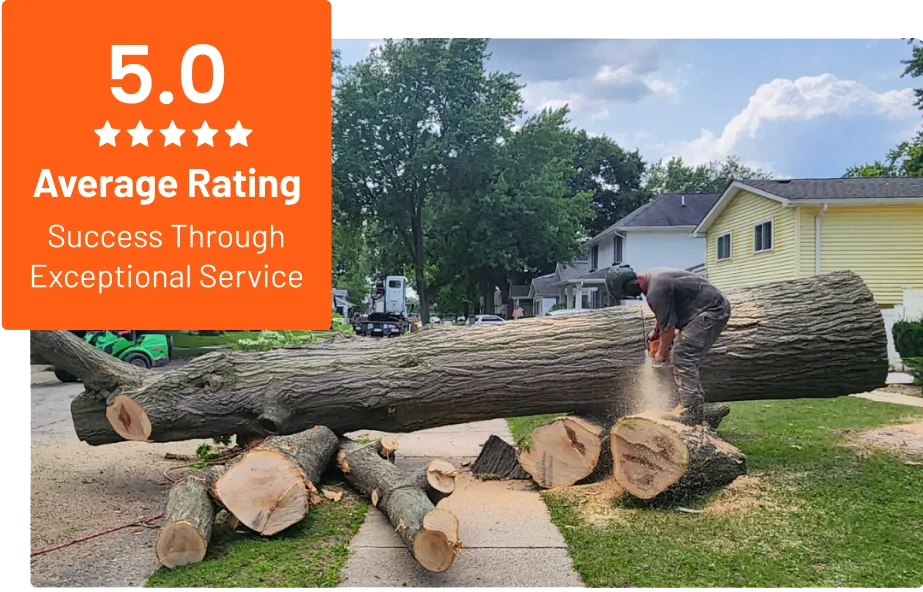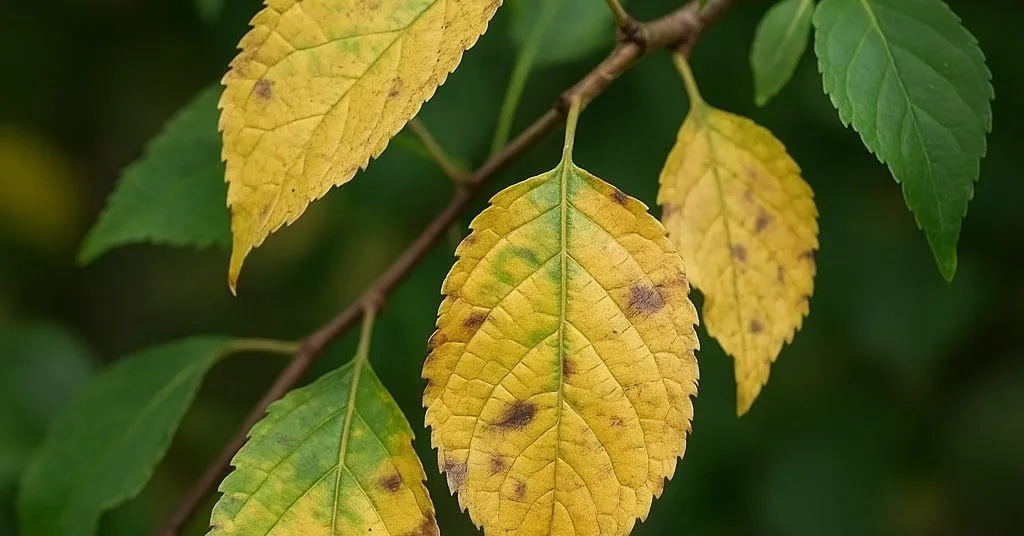
August 19, 2025
Is your tree really healthy or showing signs of trouble you might be missing? Falling trees and limbs cause billions in property damage each year, and many of these accidents start with small, overlooked warning signs. From yellowing leaves to peeling bark, subtle changes often reveal deeper problems. In this guide, we’ll address the challenges homeowners face, show you exactly how to spot the symptoms of a sick tree, explain why early action matters, and outline when professional care is essential. By the end, you’ll know how to protect both your trees and your property with confidence.
10 Signs Your Tree May Be Sick (and What They Mean)
Thinning or Sparse Leaves
A healthy tree should have a full canopy. If branches look bare or uneven, it may be struggling with poor nutrition, pests, or root damage.
What to do: Check soil moisture and inspect for insects. If thinning is widespread, call an arborist for a health evaluation.
Yellowing, Curling, or Spotted Leaves
Leaf discoloration often points to stress, disease, or pest infestation. For example, fungal infections can create dark spots, while nutrient deficiencies may cause leaves to turn pale or yellow.
What to do: Compare with nearby trees of the same species. If yours looks different, it is worth further inspection.
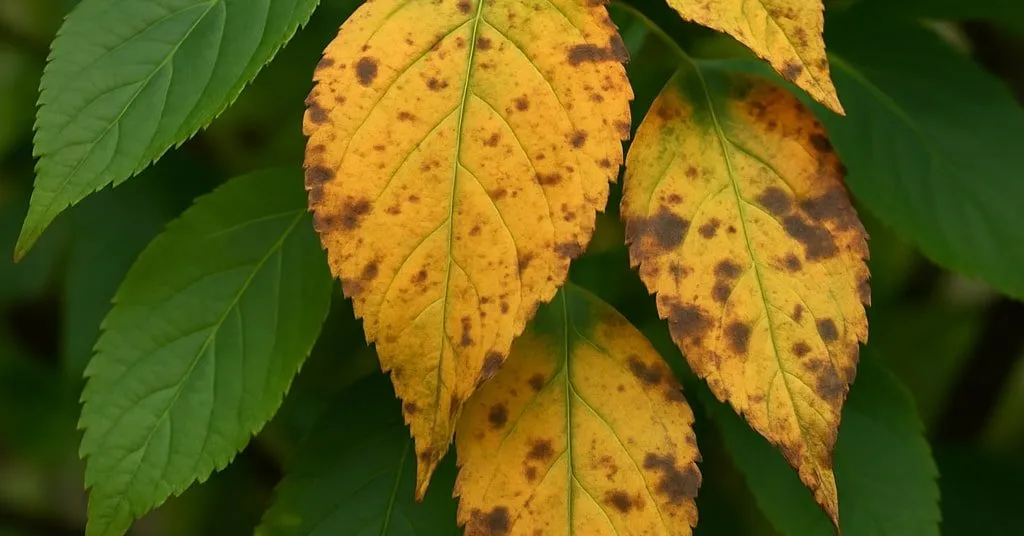
Dead or Brittle Branches
Branches that snap easily or remain leafless while others thrive are usually dead. Deadwood increases the risk of falling limbs, especially during storms.
What to do: Remove small dead branches yourself, but hire a professional for larger ones near structures or power lines.
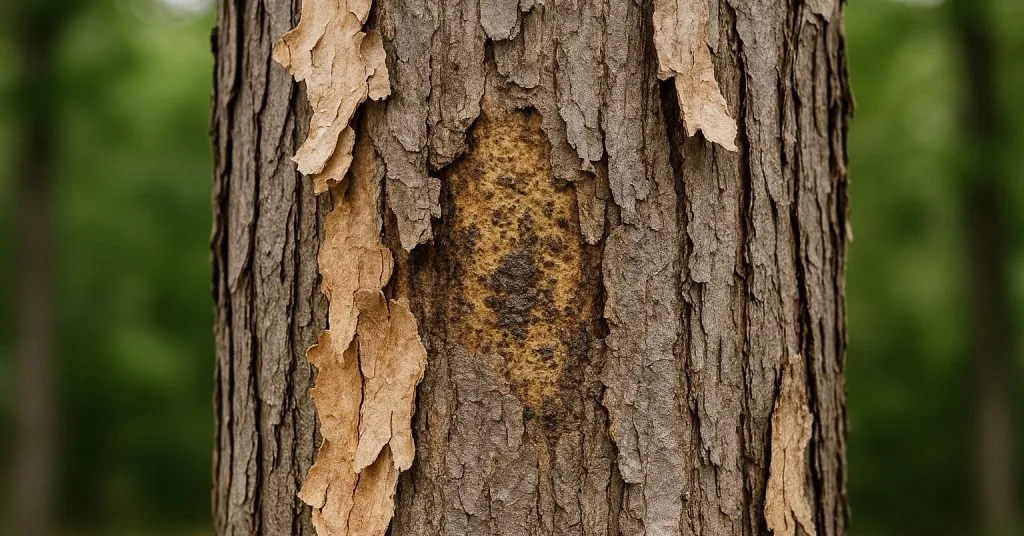
Early Leaf Drop
Trees naturally shed leaves in the fall, but if this happens much earlier, it is often a sign of stress from drought, disease, or root problems.
What to do: Water deeply during dry periods and look for other stress indicators like bark damage or soil compaction.
Cracked or Peeling Bark
Bark is a tree’s protective shield. Large cracks, missing patches, or peeling layers expose the inner wood to pests and infection.
What to do: Small cracks may heal, but extensive bark loss often means the tree is in decline.
Fungi or Mushrooms at the Base or Trunk
Mushrooms, shelf fungi, or conks usually signal internal rot. By the time fungi appear, decay may already be advanced.
What to do: This is rarely a DIY fix. Have an arborist check structural stability.
Insect Damage
Look for tiny exit holes, sawdust-like material, or visible pests like beetles or borers. Left unchecked, insects can weaken or kill a tree.
What to do: Minor infestations may be treated with sprays or pruning. Severe cases require professional intervention.
Leaking Sap or Dark Streaks
Wet spots, oozing sap, or foul odors on bark may point to bacterial or fungal infections that block nutrient flow.
What to do: Mark the area and monitor. If the problem spreads, get a professional diagnosis.
Damaged or Exposed Roots
Roots anchor the tree and supply water. If they are cracked, soft, or surrounded by compacted soil, the tree’s health is at serious risk.
What to do: Avoid parking or placing heavy equipment near roots, and consult an arborist if damage is visible.
Leaning or Unstable Trunk
A sudden lean or shifting soil at the base can mean the roots are failing. This poses an immediate safety hazard.
What to do: Do not wait. Contact a professional right away to prevent collapse.
Step-by-Step Guide to Evaluating a Tree
1. Conduct a Visual Inspection
Stand at a distance to assess the overall structure, canopy density, and balance. Then move closer to inspect the trunk, base, and branches.
- Are branches thinning or bare?
- Are leaves discolored, spotted, or wilted?
- Do you see insects, webbing, or bore holes?
2. Perform the Scratch Test
Gently scratch the surface of a small branch with your fingernail or a knife. Healthy wood is green and moist underneath. Brown, dry wood indicates dieback.
3. Look for Fungal Growth
Mushrooms or shelf fungi near the trunk or roots often indicate internal decay.
4. Inspect the Bark and Trunk
Check for cracks, missing bark, sunken areas, dark streaks, or leaking sap. These are all possible signs of infection or decay.
5. Examine the Roots and Soil
Look for exposed, soft, or damaged roots. Soil that is compacted or heavily eroded can also weaken stability and root health.
Professional Tip: Apply 2–3 feet of mulch around the tree base to retain moisture, improve soil health, and prevent mower damage.
Tree Health Threats in Michigan
Michigan trees face a mix of pests, diseases, and weather extremes that can quickly weaken or kill them. Here are some of the most common threats explained in simple terms:
- Emerald Ash Borer: A small green beetle that has destroyed millions of ash trees across the state. The larvae tunnel under bark and cut off the tree’s ability to move water and nutrients. Most untreated ash trees infested by this pest do not survive.
- Oak Wilt: A deadly fungal disease that spreads through the roots of nearby oaks or by beetles carrying spores. Once infected, oaks often die quickly, sometimes within a single season. Avoid pruning oak trees between April and July, when the risk of infection is highest.
- Dutch Elm Disease: Once wiped out many American elms and is still present in cities and towns. It spreads when elm bark beetles carry spores from sick trees to healthy ones. Infected trees show wilting, yellowing leaves, and branch dieback.
- Harsh Winters and Freeze-Thaw Cycles: Michigan’s cold winters and fluctuating temperatures can crack bark, damage roots, and stress trees. Rapid warming and cooling cause expansion and contraction that weakens the trunk and branches over time.
Understanding these local risks makes it easier to spot early warning signs and protect your landscape before damage spreads.
Preventing Tree Sickness
- Schedule annual arborist inspections for early detection.
- Apply 2–4 inches of organic mulch to regulate soil temperature and retain moisture.
- Prune during dormant seasons and remove weak or crossing branches.
- Practice deep, infrequent watering to encourage strong root systems.
- Avoid compacting soil by keeping heavy equipment and vehicles away from root zones.
Preventive care is always less costly than emergency removal or damage repair.
FAQs
Start here if you have quick questions. Below are some of the most common homeowner concerns about tree health, answered clearly and professionally.
How can I tell if my tree is dying or just stressed?
Look for multiple warning signs: lack of leaf growth, brittle branches, or fungal growth. Stress can be managed, while dying trees usually show steady decline. You may also notice reduced leaf size and overall thinning of the canopy. Monitoring changes season by season will give clearer insight. Calling an arborist for a second opinion is always worthwhile.
Can I save a sick tree myself?
Early issues may respond to watering, mulching, and minor pruning. Advanced infections or pest infestations often need professional treatment.
What are the most common tree diseases in Michigan?
Oak wilt, Dutch elm disease, fire blight, anthracnose, and needle cast in evergreens.
Can pruning spread disease?
Yes. Always disinfect tools between cuts and avoid pruning in wet conditions.
How often should I inspect my trees?
Ideally, once each season. Spring and fall are especially important. Regular checks allow you to notice changes early before they become serious problems. Walk around the tree, inspect the trunk, branches, and soil, and take note of any new growth patterns or visible stress. If you spot unusual changes, consult a professional for peace of mind.
Is it more cost-effective to treat or remove a sick tree?
Treatment is typically less expensive if caught early. Removal is necessary if the tree poses safety risks. In many cases, investing in preventative care like pruning, mulching, or soil improvements can extend a tree’s life for years. However, when structural integrity is compromised, removal becomes the safest and most cost-effective solution.
Can tree diseases affect people or pets?
Most tree diseases are species-specific, but certain fungi can aggravate allergies. Mold spores and decayed wood may irritate sensitive individuals or pets. While most infections are not dangerous to humans, it is wise to limit contact and keep children and animals away from visibly sick trees. Addressing tree health promptly reduces risks for both your household and your yard.
Are dead trees more dangerous in winter?
Yes. Snow and ice can cause structurally weak trees to collapse. Heavy winter storms increase the risk of branches breaking and entire trees toppling. Because frozen soil provides less stability, leaning trees are even more hazardous in cold months. Removing dead trees before winter protects both property and personal safety.
Next Step
Noticing signs of decline? Schedule a professional tree health evaluation with Clean Cut Tree Experts. We proudly serve Novi, Farmington Hills, Livonia, and neighboring Michigan communities with safe, expert tree care.


